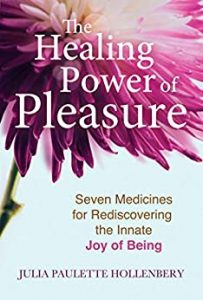I promised a follow up on living with an electric car. Here’s how we are getting on.
It has been a mixed bag, mostly positive with a few annoyances. Here are a few highlights:
Quiet
There’s a quiet effortlessness about an electric car. It is a different feeling to drive completely. I was used to a roar of engine noise meaning power. There’s none of that at all. A bit more like putting the foot down and it takes off with a hint of an electric whirr. Or touch the accelerator and it glides along silently. Mind you, some of this silence will be just because it is a new well-insulated car.
Not smelly
When operating this car doesn’t smell. I also never hang around fuelling stations. Now I notice exhaust and petrol fumes on other cars. This is a bit like it was when people stopped smoking in public and suddenly noticing smelly second-hand cigarette smoke when walking behind a smoker on the street. So now I notice car pollution. Before I just didn’t notice.
Reliable
The whole car seems pretty simple and reliable. There’s a lot less to go wrong. No emissions system. No real gearbox. No catalytic converter, radiator, exhaust pipe, water pump, ignition, fuel injection, turbocharger. Less to go wrong. Instead you have an electric motor, a simple gearbox and a bunch of batteries. Nothing has gone wrong so far.
Low cost per mile
So we charge overnight at home, so we’re paying off of our regular power bill to charge the car (with Ecotricity offering a small grant/discount for electric car owners). Out and about charging is either free or pretty low cost so far. So, the cost of fuel seems pretty close to zero. The previous £70 in fuelling the old petrol car has now pretty much disappeared. This is a decent saving.
Range difficulties
The electric has a much smaller range than the old petrol car. And the faster I go, the shorter the range, so motorway range (when range really counts) is a lot less than old slow road range. This doesn’t matter at all going in and out of town, a 5 mile round trip. But motoring across England it does matter. It means both limiting maximum speed to say 60 or 65 and stopping regularly (say every 50 miles) for a ½ hour of charging. It is something like this: the Motorway range is 50 miles and the slow road range is 70 miles. Slow going.
I really want something like a Tesla with a 200+ mile range. That’d make it barely noticeable.
Home Charging
Home charging is easy for us, we have off-street parking and a garage with power. Simply a matter of plugging in the lead in the garage, then drive the car up, park up in the driveway and plug it in. This feels just like putting the phone on charge every night. The car will fully charge overnight from a regular 13A socket, so that is simple. I guess we charge it every 4-5 days in normal life.
Patchy Charging Infrastructure
So I don’t need petrol stations — but I do need fast chargers out and about and things for people to do while the car is charging. So more likely you want chargers at shops and the gym and motorway services.
There are networks of charging points emerging — they are being installed across the UK. Right now there are not enough chargers out there so it is possible to get caught where there is a charger offline. And because the technology is new, chargers aren’t as reliable as you’d expect. This means that a whole trip can be aborted when a key charger is not in place. Or alternatively a trip can slow down because I have to queue up to have a go at the charger.
We’ve resorted to careful planning for the longer trips now — checking charges are available and having a backup in case something is not working. This is a bit of a faff too, as the mapping of charging points is contains across multiple services and they are all slightly different.
Community
Clearly this is all for early adopters. And that means there’s a community aspect to this built out of the novelty of the whole thing and needing to exchange stories.
Turning up at a public charger means you’re likely to run into people charging or waiting to charge — and there’s a chance to have a chat about chargers, cars, range, cables. This is quite an enjoyable part of the whole thing — as long as you’re not in a hurry. Think back to the stories of the introduction of motoring. A bit like that.
In summary
This is early adopter stuff. If are an early adopter then consider it. Otherwise wait a couple of years for extended range and simplified charging networks. There is no doubt the electric experience is a good one when it is all lined up.
I think it is totally worth doing, though with a couple of caveats:
- Without off street parking it is going to be really hard. You’re going to have to use public chargers for most of your charging.
- Make sure that the basic range suits your commuting/regular trips.
- Beware of buying an electric car — I’d lease until range becomes less of an issue. Battery technology is improving rapidly.






